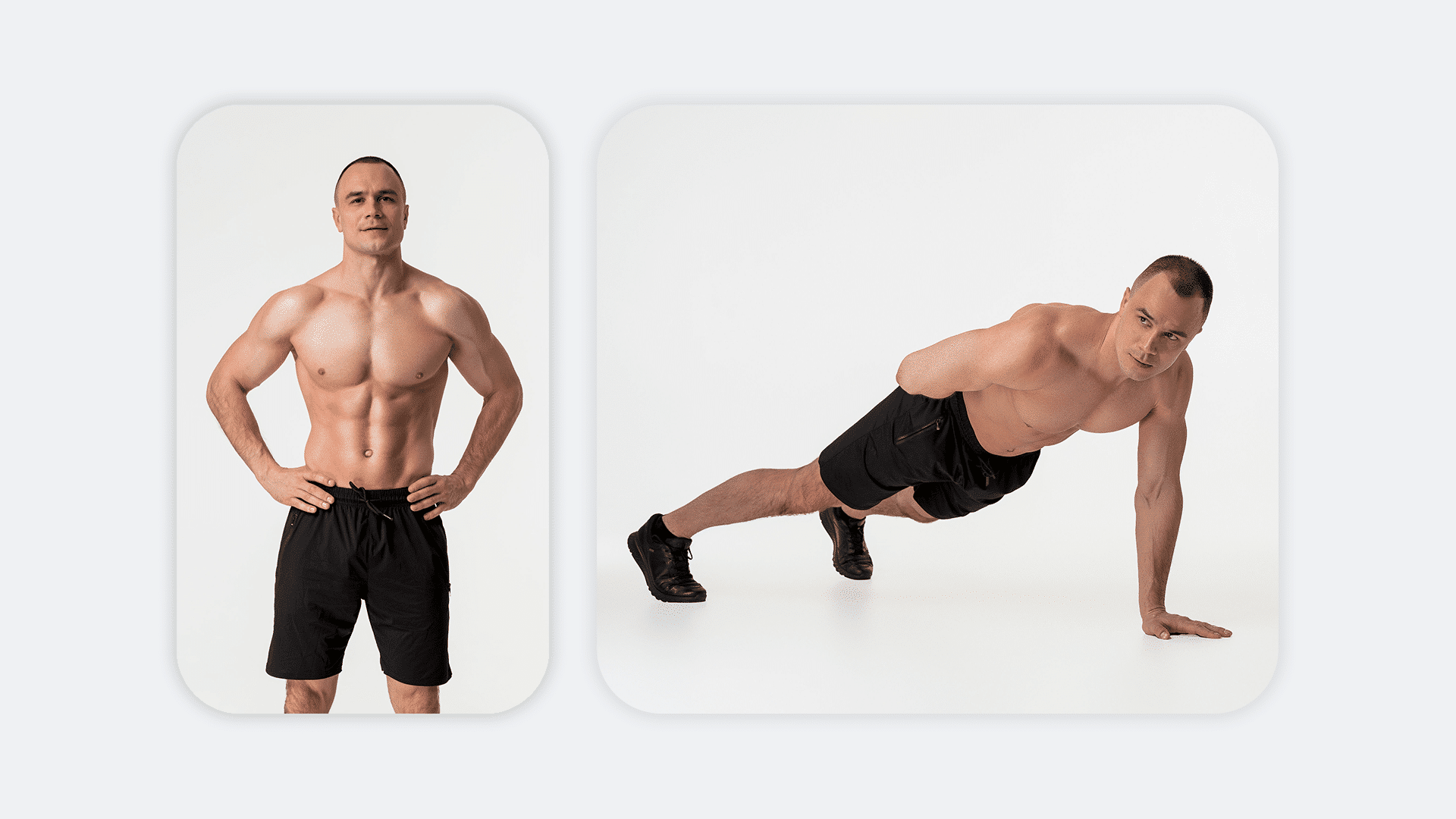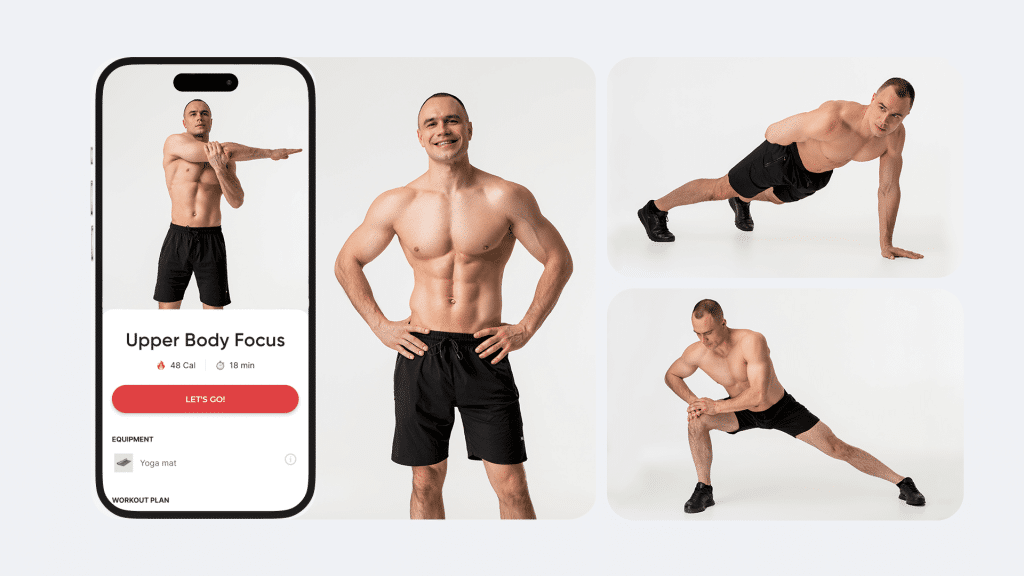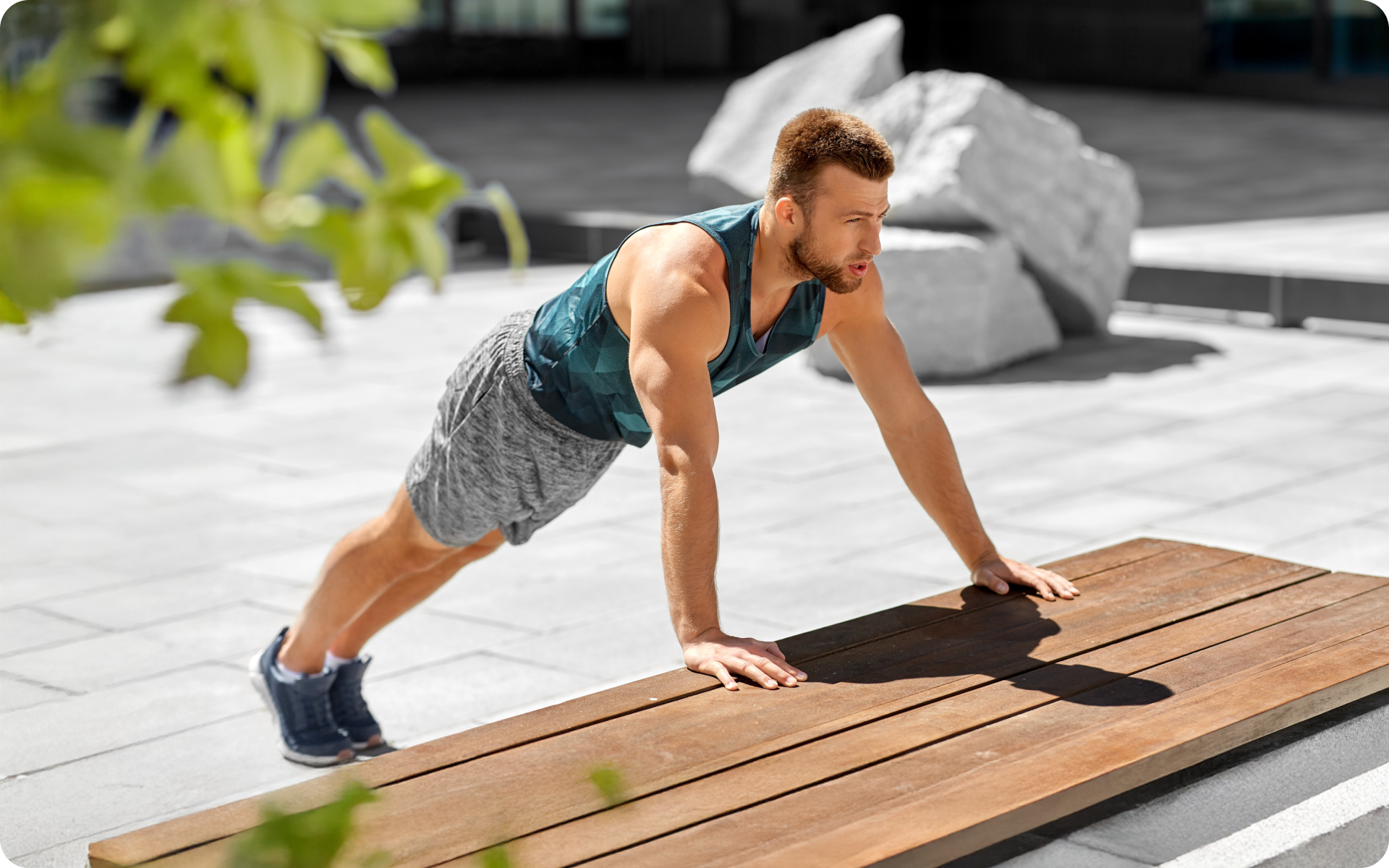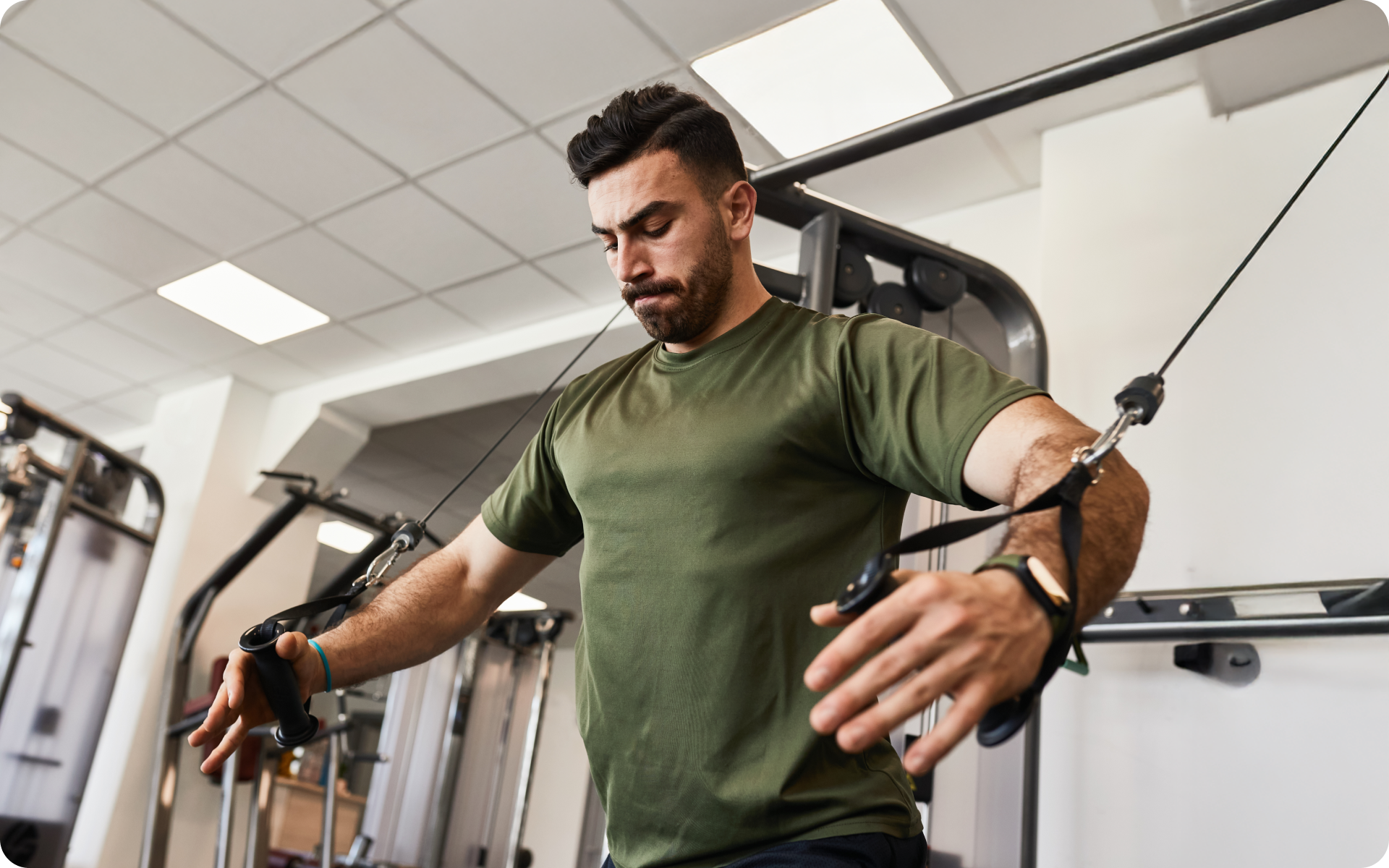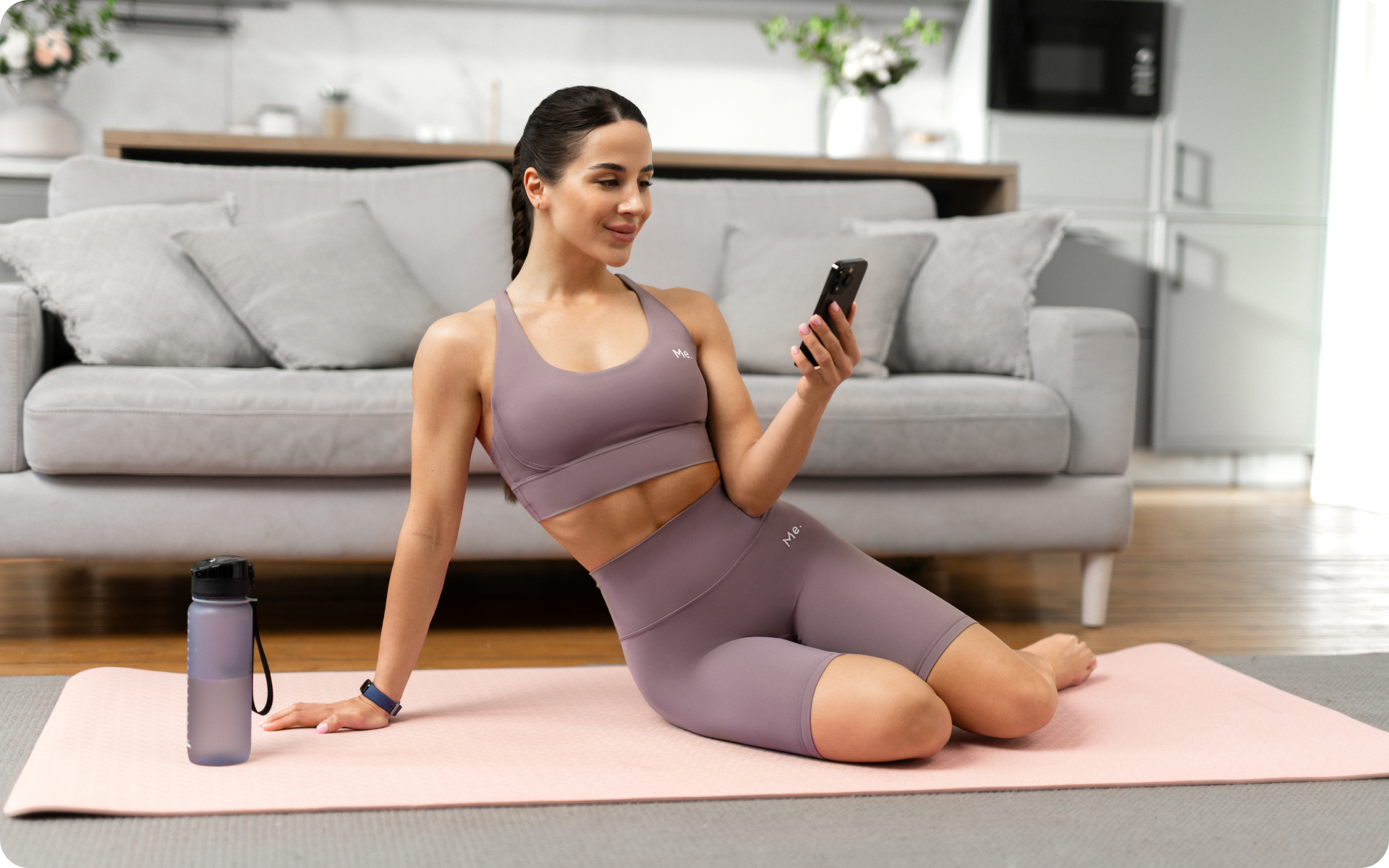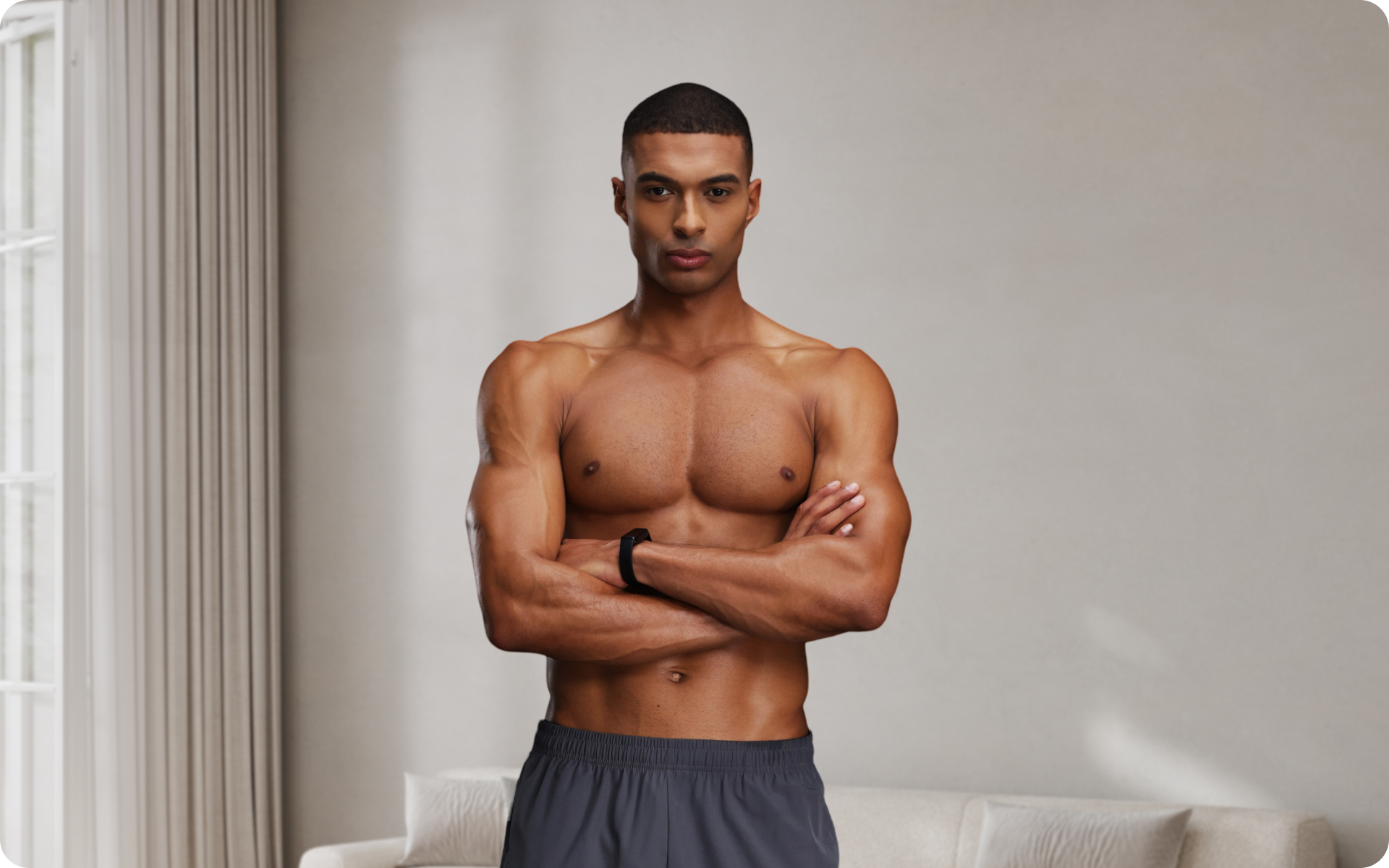Bodyweight exercises are a great option for beginners and people who don’t have access to a gym to improve their body and health. Plyometrics and calisthenics are the two most popular types of bodyweight workouts for anyone who is getting into fitness.
While they may seem similar at first glance, they actually train different areas and are recommended for different demographics and goals. If you’d like to learn the difference between plyometrics and calisthenics, find out whether calisthenics workouts can help build muscle. Become informed about which bodyweight workout is best for beginners – read on!
Plyometrics vs Calisthenics: What Is The Difference?
According to WebMD, plyometrics exercises are a type of workout training that uses speed and the force of different movements to build muscle power. A plyometrics workout plan will most likely include short, intense bursts of activity that target fast-twitch muscle fibers in the lower body (8).
These exercises involve the use of vertical and broad jumping motions that stretch and contract your muscles. Although plyometric exercises are often associated with sports-specific athletic performance – due to their ability to increase speed, endurance, and strength – they can be performed by anyone.
And at the same time, calisthenics workouts are resistance exercises that use your body weight with little to no equipment to build strength and endurance, and improve posture, flexibility, and coordination (10). These exercises generally target and use multiple large muscle groups and unlike plyometrics that uses short and intense bursts of activity, calisthenics is done at a moderate pace.
BetterMe app will kick you out of the mental funk, shake off your extra weight, rid you off your energy-zapping habits, and help you sculpt the body of your dreams. Intrigued? Hurry up and change your life for the better!
Can You Build Muscles With Plyometrics?
Yes, you can.
While plyometric exercises are used to help increase muscle power – the body’s ability to perform an activity quickly and repeatedly by applying a given force (7) – they can also help build muscles.
One review that was published in the Journal of Sport and Health Science in 2021 suggested that plyometric training may yield results similar to resistance training for muscle growth. The review examined eight different studies to try and determine muscle hypertrophy results in plyometrics vs resistance training.
At the end of the review the researchers concluded that both plyometric and resistance training may produce similar effects on increasing muscle size, particularly those in the lower extremities from the hips to the toes.
Reviewers also found that these muscle growth effects were mostly short-term (about 12 weeks) and were more common in previously untrained or recreationally active study subjects (4).
Basically, doing plyometric jumping workouts can help increase muscle growth, but this is only possible for people who do not exercise at all or those who are new to fitness. With intermediary or advanced exercises, muscle growth may not be possible or noticeable.
Can You Combine Calisthenics And Plyometrics?
Yes, you can.
Both calisthenics and plyometrics are bodyweight workouts requiring little to no exercise equipment to complete. Looking at how these exercises are performed, it is clear that calisthenics is a more toned-down and moderate version of plyometrics.
If you wish to combine these two, we suggest that you first become familiar with calisthenic exercises before you incorporate plyometrics. The latter has a higher injury risk and is more damaging to both lower-body joints and bones, so you should use calisthenics to build strength and endurance first before doing plyometrics.
Better yet, we suggest enlisting the help of a trainer to guide you through this combination to further reduce any risk of injury.
Can Calisthenics Get You Ripped?
Yes, they can. Weight lifting is not the only thing that can be used to increase muscle definition. Calisthenics are compound exercises where movements require the use of multiple muscle groups at the same time.
Not only does this burn a lot of calories – which results in weight loss and a much leaner physique – but the constant use of muscles allows them to break down and rebuild over and over which will help you get ripped in the long run.
Read more: Setting Up a Daily Calisthenics Routine That Works: Exercises, Frequency, and More.
Calisthenics vs Weights: Which Is Better?
Calisthenics vs weights: this is largely dependent on your goals and circumstances. For example:
- People who are recovering from injuries will benefit more initially from bodyweight exercises such as calisthenics than using weights.
- Safety – using weights with improper technique or an inadequate program could lead to certain muscle imbalances or overuse in the body and, as a result, injuries or muscle strains could occur. Calisthenics just uses your body weight, so it may be a more suitable starting point for beginners, also helping minimize injury risk through gradual physical progression.
- Ease of access – as calisthenics requires no equipment, it can be performed anywhere and at any time, unlike weightlifting which requires cumbersome free weights or fancy machinery.
- Muscle isolation – while both calisthenics and weightlifting can help with muscle growth, the latter appears to be better for building total muscle strength.
According to Healthline, if your goal is strengthening a specific muscle group, weightlifting may work better as this allows you to effectively overload the muscle in question. This overload creates tears which repair and make the muscle stronger.
However, that’s not to say that calisthenics are useless for developing muscle strength. One study that was published in 2018 and compared progressive calisthenic push-up training to traditional bench press training found that both forms of exercise can increase both muscle strength and thickness in the upper body (3).
Tracking progress
If you are obsessed with tracking your progress, weightlifting is better than calisthenics. E.g. you can easily tell when you start lifting heavier weights
Fun and creativity
Some people may find calisthenics easier to modify, which makes them more fun to do. If you tend to become bored quickly with routines and set systems, calisthenics is most likely the better option for you.
Plyometrics vs Calisthenics For Beginners: Which Is The Better Option?
For true beginners or recreational gym-goers, calisthenics is a much better option than plyometrics. As previously mentioned, plyometrics includes short bursts of activity with most exercises using vertical and broad jumping motions that stretch and contract your muscles.
This means that plyometric exercises are incredibly high-impact. While high-impact exercises are great for improved cardiovascular health, bone and muscle strength, endurance, and athletic performance, they can also exacerbate joint pain (5, 2, 1).
Such exercises may also pose a high risk for injury, particularly among those suffering from specific health conditions such as osteoporosis, and can even cause urinary incontinence, particularly in women (9, 11, 6).
However, basic calisthenics is more low-impact and poses a lower risk of injury to beginners. Anyone who is looking to do plyometrics in the future should learn and build their fundamentals with calisthenics before they advance to plyometrics.
BetterMe is your fast-track ticket to a long-lasting weight loss! Tailor your fitness journey and maximize your results with just a couple of swipes!
What Are The Disadvantages Of Plyometrics?
As previously mentioned, the only real disadvantage of plyometrics exercises is the higher risk of injury, particularly to the joints in your lower extremities. Remember that these workouts, specifically plyometrics exercises for speed, involve a great deal of jumping and bounding movements.
Performing such exercise repeatedly may place more stress on the joints in your legs i.e. knees, ankles, hips, etc.
Plyometrics vs Calisthenics In Weight Loss: Which Is Better?
As plyometrics are higher-impact, you may be tempted to use a plyometric workout plan to try and lose weight. However, we would advise against this. While they are very high-impact, they also pose a higher injury risk, as we mentioned above.
Instead, we recommend you do calisthenics with some aerobic exercises included. Calisthenics may be low-impact, but they are also compound exercises that work multiple muscle groups at the same time.
This helps with both muscle growth and increased calorie burning – two factors that will aid weight loss. The addition of cardio workouts such as swimming, walking, hiking, or dancing can be the high-impact exercise rather than plyometrics.
Do We Have Upper Body Plyometrics Exercises?
Do we have upper body plyometrics exercises? Contrary to popular belief, these exercises do not only involve jumping and the lower body. You can also work the upper body with this type of workout. Many plyometric upper-body workouts involve a lot of throwing, passing, and catching motions.
Common examples include:
- Wall chest passes
- Overhead throw
- Battle rope waves
- Plyometric push-ups
- Overhead medicine ball slams
- Plyometric pull-ups
Read more: Basic Calisthenics Workout: A Comprehensive Guide for Beginners.
FAQs
Is it okay to do plyometrics every day?
No, it is not.
As mentioned above, these exercises can be quite intense and are very high-impact. The force and jerky movements that are required to complete these workouts are incredibly hard on the bones and joints.
To prevent wear, tear, and injury, you should limit your plyometric exercise sessions to once or twice a week at the most. If you choose to do these workouts twice a week, ensure that there are at least two rest days between your sessions.
Is too much plyometrics bad for you?
Too much of anything is considered bad so yes, too much plyometrics could be bad for you and your joints.
Why are calisthenics guys so lean?
These workouts use multiple muscle groups, meaning that you burn a lot of calories during and after the workout. This can lead to weight loss, helping them achieve a much leaner physique. In addition to weight loss, the use of muscles to support your body weight and challenging them during a session can promote muscle growth and definition.
The Bottom Line
In the plyometrics vs calisthenics debate, there is no doubt that both types of workout have their own benefits. However, plyometrics can be incredibly intense and high-impact, so it may not be the best for beginners or casual exercisers.
If weight loss and muscle definition are your goals, calisthenics should be enough to give you amazing results. However, if speed is your goal and you are looking to get into plyometrics, you should start slow. Better yet, you should enlist the help of a trained professional to guide you and help you avoid injury.
DISCLAIMER:
This article is intended for general informational purposes only and does not serve to address individual circumstances. It is not a substitute for professional advice or help and should not be relied on for making any kind of decision-making. Any action taken as a direct or indirect result of the information in this article is entirely at your own risk and is your sole responsibility.
BetterMe, its content staff, and its medical advisors accept no responsibility for inaccuracies, errors, misstatements, inconsistencies, or omissions and specifically disclaim any liability, loss or risk, personal, professional or otherwise, which may be incurred as a consequence, directly or indirectly, of the use and/or application of any content.
You should always seek the advice of your physician or other qualified health provider with any questions you may have regarding a medical condition or your specific situation. Never disregard professional medical advice or delay seeking it because of BetterMe content. If you suspect or think you may have a medical emergency, call your doctor.
SOURCES:
- Effect of High-Intensity Strength Training on Knee Pain and Knee Joint Compressive Forces Among Adults With Knee Osteoarthritis (2021, ncbi.nlm.nih.gov)
- Effect of Impact Exercise on Physical Performance and Cardiovascular Risk Factors (2007, journals.lww.com)
- Effect of Progressive Calisthenic Push-up Training on Muscle Strength and Thickness (2018, pubmed.ncbi.nlm.nih.gov)
- Effects of plyometric vs. resistance training on skeletal muscle hypertrophy: A review (2021, sciencedirect.com)
- High and odd impact exercise training improved physical function and fall risk factors in community-dwelling older men (2018, pubmed.ncbi.nlm.nih.gov)
- High-Impact Exercise Increased Femoral Neck Bone Density With No Adverse Effects on Imaging Markers of Knee Osteoarthritis in Postmenopausal Women (2019, asbmr.onlinelibrary.wiley.com)
- Muscle Strength (n.d., sciencedirect.com)
- Plyometrics: Three explosive exercises even beginners can try (2023, health.harvard.edu)
- Stress Incontinence during Different High-Impact Exercises in Women: A Pilot Survey (2020, mdpi.com)
- The effects of a calisthenics training intervention on posture, strength and body composition (2017, researchgate.net)
- When Do Individuals Get More Injured? Relationship between Physical Activity Intensity, Duration, Participation Mode, and Injury (2021, ncbi.nlm.nih.gov)
